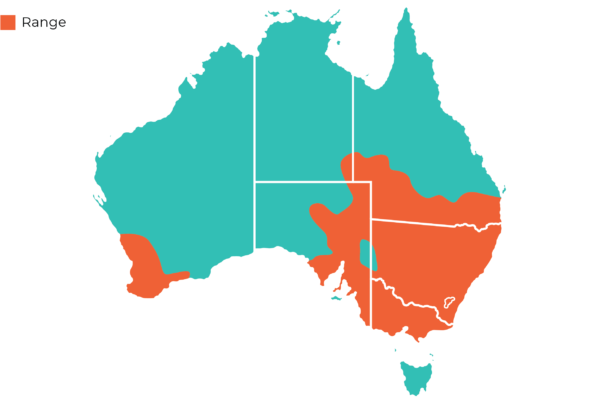Description
The Freckled Duck has a distinctive appearance. It is characterised, in adults, by dark grey to black plumage covered with small white flecks, which gives the duck the ‘freckled’ look. The feet, legs and bill of both sexes are of a slate grey colour. Hatchlings and juveniles are distinguished by a uniform light grey plumage, which they lose around their 32nd week when they undergo a full body moult to assume the adult plumage.
Distribution
Endemic to Australia, the Freckled Duck is mainly situated throughout inland regions of the Eastern section of the country—including New South Wales, Victoria and Queensland. This species also has known populations in South Australia and Western Australia.

Lifespan
10 years.
Size
The males are the larger sex, with an average weight between 700 - 1200g. Females have a slightly lower range between 600 – 1200g. Both sexes have a length of 50 – 60 cm.
Diet
Aquatic vegetation, insects, algae, larvae and crustaceans.
Habitat
The Freckled Duck prefers permanent freshwater swamps and creeks with a heavy growth of cumbungi (bullrushes), lignum or tea-tree. During drier times, the Freckled Duck moves from ephemeral (not permanent) breeding swamps to more permanent waters such as lakes, reservoirs, farm dams and sewerage ponds.
Breeding
Nesting usually occurs between October and December but can take place at other times when conditions are favourable. Nests are usually located at or near water level and are made from finely woven twigs with a layer of down.